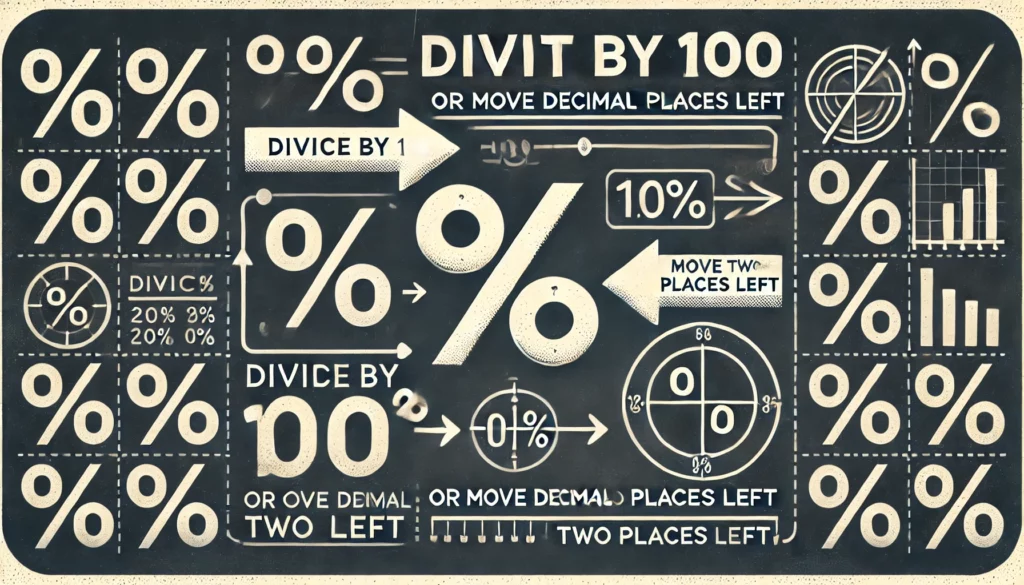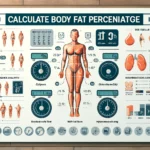Converting percentages to decimals is a fundamental mathematical concept used in various fields such as finance, science, and everyday calculations. Whether you’re a student, professional, or just someone looking to simplify calculations, understanding this conversion is essential. In this guide, we will explore the step-by-step process of converting percentages to decimals and provide examples to enhance your understanding.

What is a Percentage?
A percentage is a way of expressing a number as a fraction of 100. It is denoted by the symbol “%” and represents parts per hundred. For example, 50% means 50 out of 100, or simply 50/100. This notation is widely used in financial and statistical calculations, making it a crucial concept to grasp.
What is a Decimal?
A decimal is a numerical representation that uses a base-10 system. It includes whole numbers and fractions separated by a decimal point. For instance, the decimal equivalent of 50% is 0.50. This system is essential for accurate mathematical operations in various applications.
The Formula for Converting Percentage to Decimal
To convert a percentage to a decimal, use the following simple formula:
Decimal = Percentage / 100
Alternatively, you can think of this process as moving the decimal point two places to the left. This method makes the conversion quick and efficient, saving time in calculations.
Step-by-Step Guide to Converting Percentage to Decimal
Step 1: Remove the Percentage Symbol
Begin by eliminating the “%” sign from the given percentage. This step allows you to focus solely on the numerical value.
Step 2: Divide by 100
Next, take the number obtained from the previous step and divide it by 100. This action converts the percentage into a decimal form. Completing this step ensures accurate calculations.
Step 3: Verify Your Answer
Finally, double-check your work by multiplying the decimal result by 100. If the original percentage is restored, then the conversion was successful. Verifying your answer helps avoid common mistakes.
Examples of Percentage to Decimal Conversion
Example 1: Converting 75%
- Remove the “%” sign: 75
- Divide by 100: 75 \div 100 = 0.75
- The decimal equivalent of 75% is 0.75.
Example 2: Converting 20%
- Remove the “%” sign: 20
- Divide by 100: 20 \div 100 = 0.20
- The decimal equivalent of 20% is 0.20.
Example 3: Converting 150%
- Remove the “%” sign: 150
- Divide by 100: 150 \div 100 = 1.50
- The decimal equivalent of 150% is 1.50.
Quick Trick: Moving the Decimal Point
An easy way to convert percentages to decimals is by shifting the decimal point two places to the left. This shortcut simplifies the process significantly.
- 75% → Move decimal two places left → 0.75
- 20% → Move decimal two places left → 0.20
- 150% → Move decimal two places left → 1.50
Common Applications of Percentage to Decimal Conversion
Understanding how to convert percentages to decimals is valuable in many areas, including:
- Finance: Used in calculating interest rates, discounts, and tax rates.
- Statistics: Essential for expressing probabilities and data analysis.
- Science & Engineering: Helps in converting efficiency ratings and performing scientific calculations.
- Education: Important for understanding grades and exam scores.
Frequently Asked Questions (FAQs)
1. Why do we divide by 100 when converting percentage to decimal?
Dividing by 100 converts the percentage into its fraction form, making it a decimal. This approach ensures precise and consistent results.
2. Can a percentage be greater than 100%?
Yes, percentages can exceed 100%, indicating a value greater than the whole. For example, 150% equals 1.50 in decimal form. This concept is often seen in profit margins and growth calculations.
3. How do I convert a decimal back to a percentage?
To reverse the process, multiply the decimal by 100 and add the “%” symbol. For instance, 0.75 × 100 = 75%. This method ensures an accurate conversion.
Conclusion
Converting percentages to decimals is a straightforward process that involves dividing by 100 or moving the decimal point two places to the left. This technique is widely applicable in financial, scientific, and educational settings. By mastering this conversion, you can simplify mathematical operations and improve numerical literacy.
We hope this guide has provided clarity on converting percentages to decimals. If you found this article helpful, feel free to share it with others!

